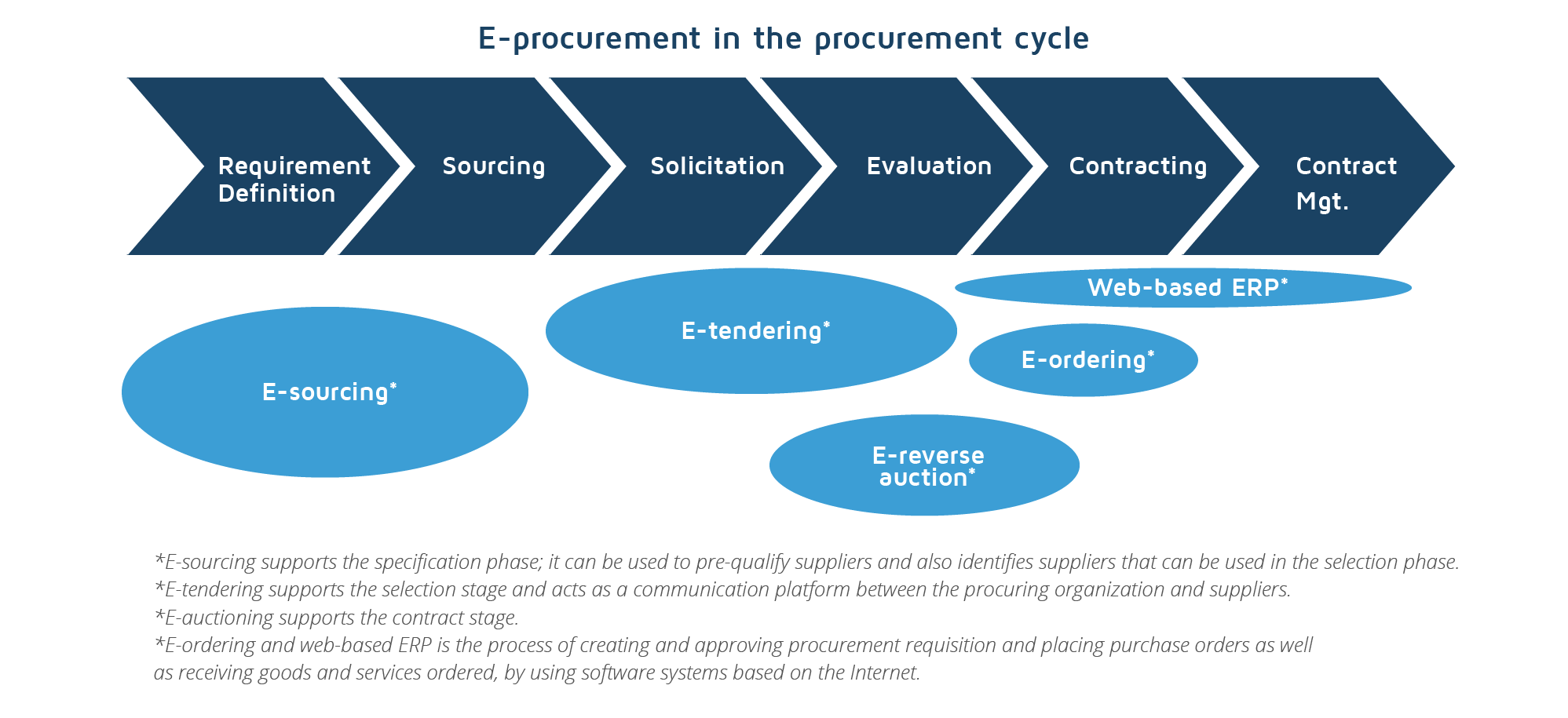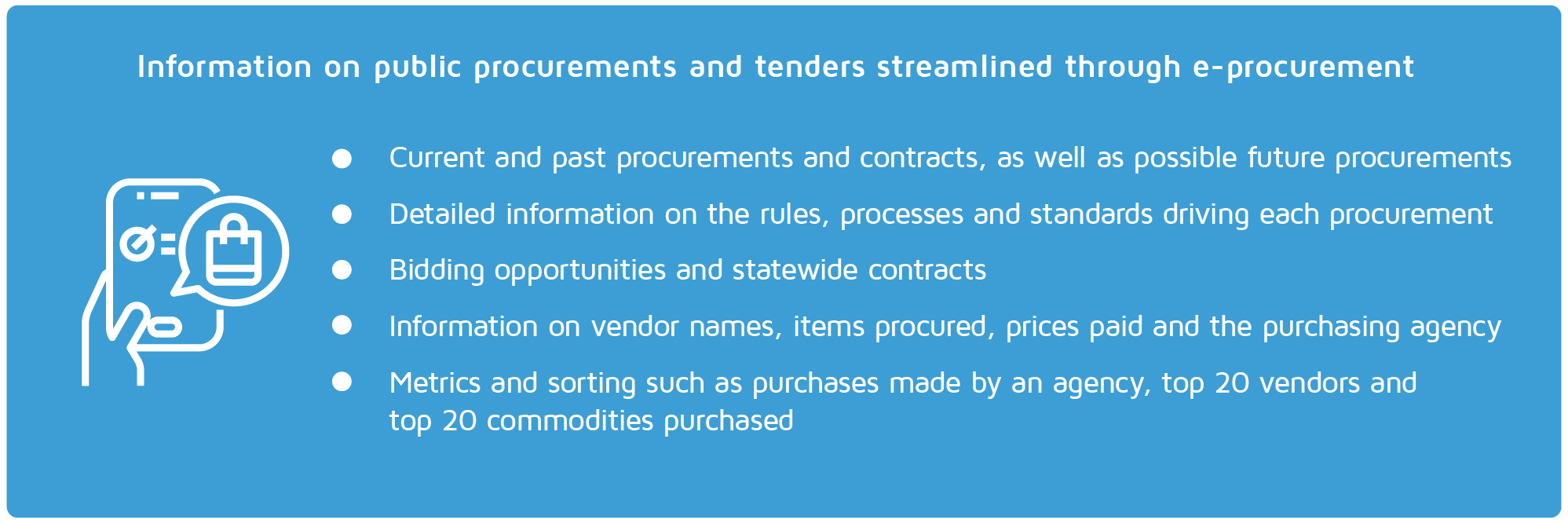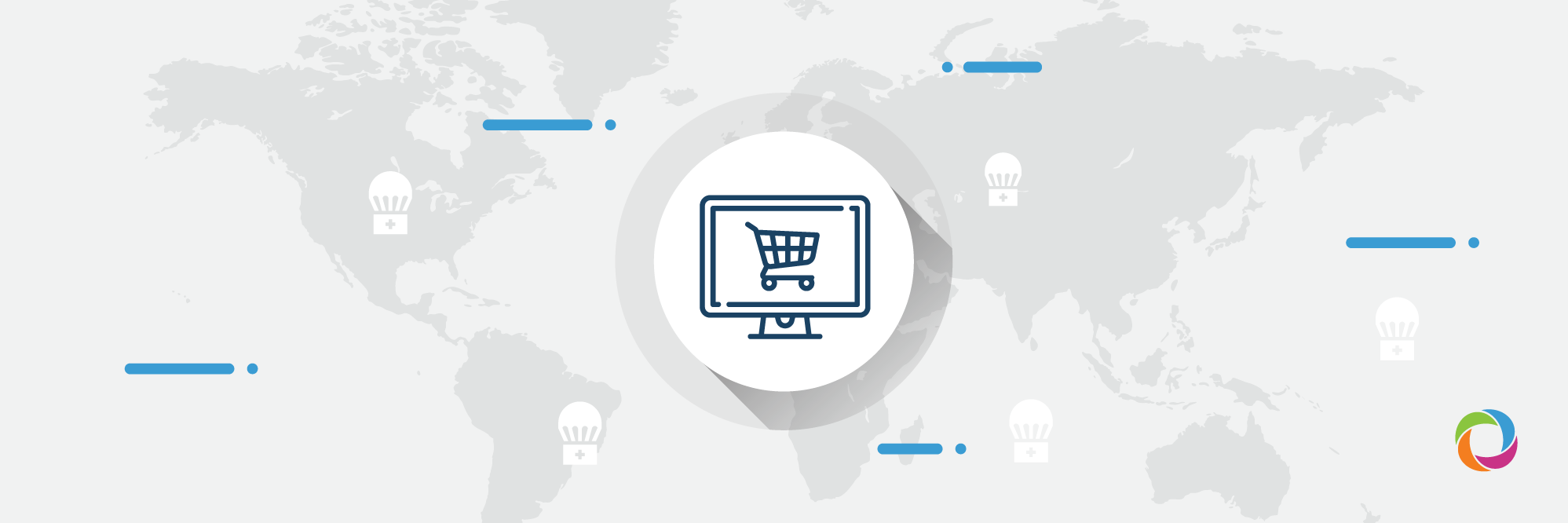E-procurement, also known as electronic procurement, is the sale and purchase of supplies, equipment, works, and services through an electronic platform. In a basic sense, instead of manually undertaking activities such as providing offers, exchanging contracts, sending out tender documents, and filling out supplier questionnaires, the entire process is automated. E-procurement requires a technological platform to support electronic interactions between the parties involved in the procurement process.
 Source: www.unmg.org
Source: www.unmg.org
Who adapted first e-procurement?
Government agencies were among the first organizations to implement e-procurement which offers shortened and efficient procurement processes along with benefits such as spend savings, a centralized system of purchases, and transparency in the purchasing of goods and services.
Increasingly, developing countries and donor agencies have recognized the importance of strong e-procurement systems to build viable partnerships and collaboration between private and public sector actors. Development banks have made the details of loan programs for government spending available online while the UN procurement system has created a global specification and code system for thousands of aid items which are crucial for online ordering and for price comparisons for purchases.

Source: www.michiganstateuniversityonline.com
E-procurement in the development sector
Through e-procurement, numerous companies in the developing world have made the internet a key part of their sales and marketing for aid-related business with governments, the United Nations (UN), and international charities. Procurement for aid needs, from infrastructural projects to humanitarian assistance, involves business with developing country enterprises, specifically for the purchase of local goods and services.
E-procurement allows aid-funded buyers to compare quickly, easily and cheaply prices, specifications and delivery dates from suppliers worldwide, including those local suppliers. Buyers in the aid business include governments, which can either be aid donors or recipient nations spending grants or loans, UN agencies with specialized roles, from emergency assistance to children or peacekeeping operations, international NGOs such as the International Red Cross and Red Crescent Movement and other smaller non-governmental organizations.
The United Nations Global Market (UNGM) is one of the largest procurement platforms in the development sector. It brings together UN procurement staff from all the UN agencies and the supplier community. The UN market for goods and services reaches over US$10 billion annually in transactions. Through the UNGM, potential suppliers can register with the 18 UN Agencies using the platform as their supplier roster. These agencies account for 95% of the total UN procurement spent.
Tenders Electronic Daily (TED) is the European Union’s online platform for public procurement. TED publishes 746,000 procurement award notices a year, including 235,000 calls for tenders which are worth approximately €545 billion. The platform provides free access to business opportunities from the European Union, the European Economic Area, and beyond.
DevelopmentAid is a leading platform in the development business, gathering together information on tenders, grants, jobs, experts, organizations, donors and references. The portal is widely used by bilateral and multilateral donors, development banks, NGOs, the private sector and individual professionals. With the output of 750+ official sources of tender information monitored daily; it provides development actors with valuable business intelligence. To gain access to our tools and services, register with DevelopmentAid, and become a member of our community.

